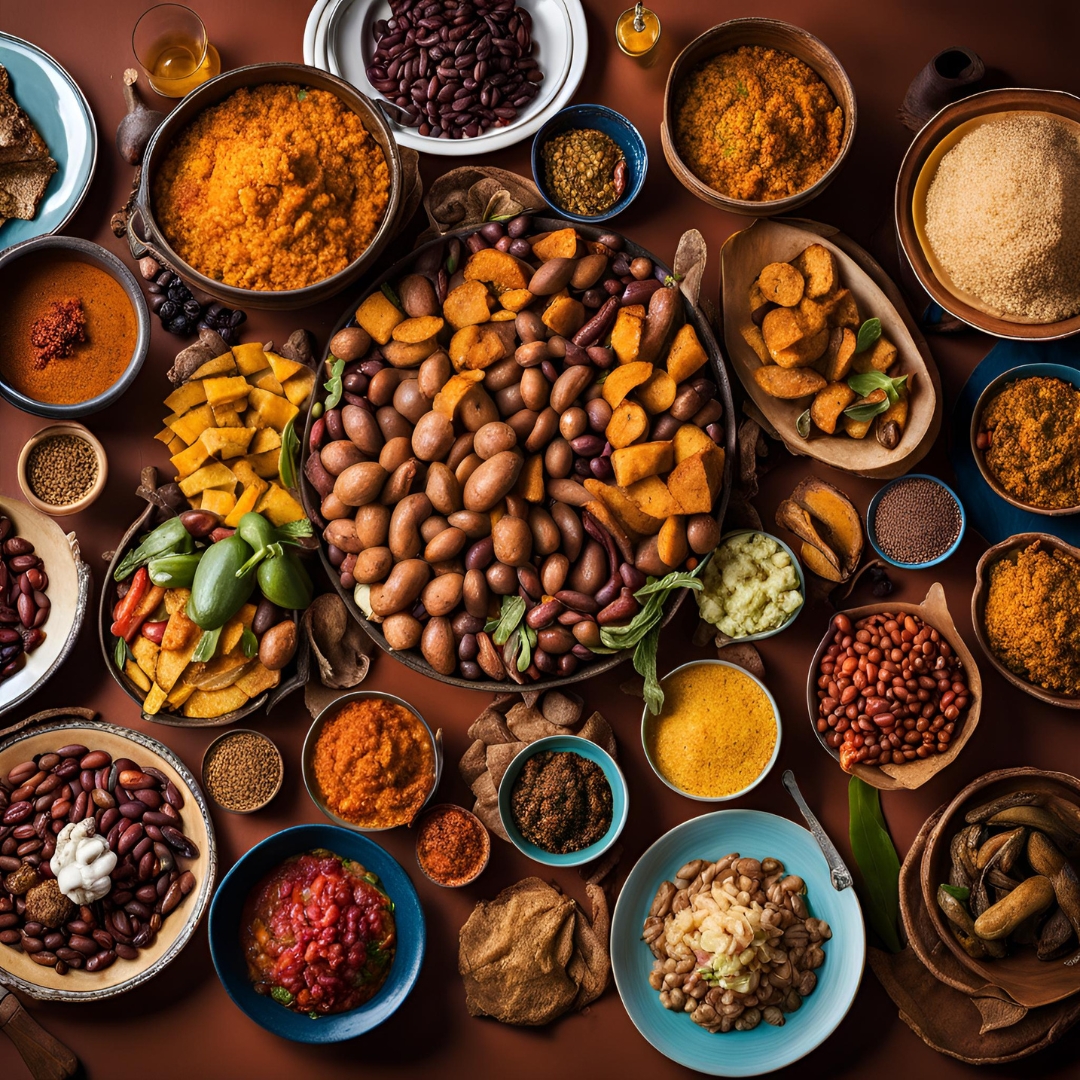Africa is home to a vast and diverse culinary landscape, with each region offering its own unique flavors. From fragrant spices to hearty grains, African cuisine is all about bringing bold flavors to the table. In this post, we will take a closer look at the key ingredients that form the backbone of many African dishes.
Whether you’re preparing a feast or simply curious about African cooking, understanding these ingredients will give you a deeper appreciation for the continent’s rich culinary traditions. Let’s celebrate the flavors of Africa!
Essential Spices that Define African Cuisine
Spices are at the heart of African cooking, adding depth and character to each dish. The use of aromatic spices varies by region, but a few stand out as quintessential ingredients across many African cuisines.
Berbere: A Staple of Ethiopian Cooking
Berbere is a fiery, complex spice blend that defines the flavors of Ethiopian dishes. Made from a mix of chili peppers, garlic, ginger, and other spices, berbere gives a bold kick to stews, meats, and vegetables. Whether used in the famous doro wat (chicken stew) or as a seasoning for lentils, this blend packs a punch. What makes it unique is the perfect balance between heat and fragrant undertones, making it a must-have for any lover of African food.
Suya Spice: A West African Favorite
Suya spice is a key component in many West African dishes, especially in Nigeria and Ghana. This blend, typically used to season grilled meats, consists of ground peanuts, ginger, paprika, and other spices. It brings a smoky, nutty flavor that pairs beautifully with chicken, beef, and even fish. Suya spice isn’t just a flavor enhancer—it’s a symbol of West African street food culture.
Key Grains and Starches in African Dishes
Grains and starches form the base of many African meals, providing sustenance and complementing rich stews and sauces.
Couscous: North Africa’s Versatile Grain
Couscous is a staple in North African countries like Morocco, Tunisia, and Algeria. This light, fluffy grain is incredibly versatile and often served as a base for hearty stews. It absorbs flavors well, making it the perfect pairing for slow-cooked meats and vegetables. In North African tradition, couscous is often the centerpiece of family meals, representing warmth and community.
Fufu: A West African Staple
Fufu is a starchy side dish made from cassava, yams, or plantains, and it’s popular across West Africa. Known for its soft, doughy texture, fufu is typically served alongside thick, flavorful soups or stews. This dish is eaten by hand, allowing diners to scoop up sauces, making it both a satisfying and interactive eating experience.
Popular Vegetables and Legumes in African Cooking
Vegetables and legumes play an essential role in African cuisine, offering both flavor and nutrition.
Okra: A Common Ingredient Across Regions
Okra is used in a variety of African dishes, particularly in the west and central regions. Known for its slightly slimy texture when cooked, okra is beloved for its ability to thicken soups and stews. In dishes like gumbo or okra soup, it brings a rich, earthy flavor that enhances the overall taste of the dish. Okra is often paired with tomatoes, spices, and meats to create hearty, comforting meals.
Black-Eyed Peas: A Protein-Packed Legume
Black-eyed peas are a staple legume in many African households. High in protein and fiber, they are used in a variety of dishes, from simple salads to rich stews. In West Africa, they are a key ingredient in akara (fried bean cakes) and moi moi (steamed bean pudding). Their mild flavor allows them to take on the richness of spices and sauces, making them a versatile addition to many meals.
Unique African Fruits You Need to Try
African fruits offer a burst of flavor and nutrients, often adding sweetness or tartness to both savory and sweet dishes.
Baobab: The Tree of Life
The baobab fruit is revered across Africa for its high nutritional value and unique taste. Often called the “tree of life,” the baobab produces a citrusy fruit that is rich in vitamin C, calcium, and antioxidants. The powder derived from its pulp is used in drinks, smoothies, and even baked goods, offering a tangy flavor with a hint of sweetness.
Tamarind: A Tangy Twist to Your Dishes
Tamarind is a popular fruit in both African and global cuisines. Its sweet and sour taste adds a tangy depth to sauces, stews, and drinks. In West African cooking, tamarind is often used to balance spicy flavors, making it a perfect addition to savory dishes like jollof rice or grilled meats.

